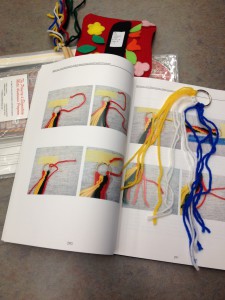OISE Library has acquired two new, richly illustrated maps of Indigenous peoples in North America to support OISE’s Deepening Knowledge Project, which “seeks to infuse Aboriginal peoples’ histories, knowledges and pedagogies into all levels of education in Canada.”
Artist and cartographer Aaron Carapella worked for fourteen years, carrying out archival and on-the-ground research, with the objective of creating “the most thorough map[s] of Native America in existence.” These maps contain several kinds of information about North American Indigenous groups from the pre-contact period, gathered together for the first time: accurate names for most tribes, given in their own languages (except where those names have been lost due to colonial violence), original geographical locations for each group, and even some archival images of traditional dwellings, boats, dress, and tribal leaders. These details lend a strong sense of history and place to the names on the maps, and allow students to engage with the maps on a visual as well as textual level. The maps are a wonderful resource for a range of subject areas, including geography; Canadian, North American, and world history; social studies and politics; and of course, Indigenous studies.
The Aboriginal First Nations map depicts the territory now known as Canada, and the Native American Nations map provides information about the continental United States. Both maps are available in a standard size (66 x 90 cm.) and the Aboriginal First Nations map is also available in a larger format (90 x 143 cm.) that is ideal for use as a teaching aid. They are available to borrow from OISE Library’s Curriculum Resources collection, located on the 3rd floor.
Learn more about this project, and view .pdfs of the maps, at the Map of our Tribal Nations web site. (This comprehensive list of North American tribal nations’ names, which contains detailed information about each group’s name and its meaning, may be of particular interest for educators and those interested in Indigenous culture and history. The list is updated on an ongoing basis.)



